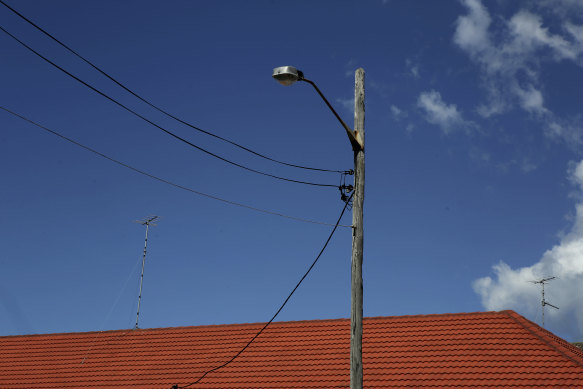Here’s what you can do about the energy price crisis

Despite the Albanese government’s best efforts to sell their first budget as a ‘five-point cost of living plan’, the aftermath has been dominated by the bombshell prediction that power bills will rise by 56 per cent over this year and next.
That’s made up of a 20 per cent increase in this financial year and a 30 per cent increase next year, for a cumulative 56 per cent hike. For a home with electricity and gas, it adds about $1300 over two years.
Power prices are going up, so what can you do about it?Credit:James Alcock
There were no solutions proposed in the budget. But the options now being debated range from taxing the windfall profits of gas exporters to fund household relief in the form of capped prices (as half a dozen European countries have done), to reserving a portion of east coast gas for domestic use (as WA does), to capping the domestic price of wholesale gas (as former ACCC boss Rod Sims argues every self-respecting gas-exporting nation does).
The Greens want money poured into transitioning households away from gas, while the Coalition wants more gas fields to be tapped and a new conversation about nuclear power.
Households care less about how governments do it and more about when they’ll see the results. There’s been a lack of urgency on this issue for months, not just since the budget. So while they debate the options, what can we do to help ourselves?
First, any home that hasn’t switched energy plans or at least checked their plan since the winter price hikes could now be paying hundreds more than is necessary. Before the crisis, almost all plans were below the government reference prices, but now as many as 1 in 3 plans in Victoria, for example, are not below that ‘fair price’ benchmark.
That’s because it’s a soft cap. Retailers can move you to a plan above the reference price as long as they notify you in writing. I saw emails from some providers in the winter notifying Queensland customers that their new plan was 30 per cent above the government price.
So anything below the government price is now a good deal, and around 5 to 10 per cent below the government price is a superb deal.
Second, households should double-check whether they’re eligible for any government concessions or rebates. These add up to hundreds and even $1000-plus in some states, but many are under-subscribed.
Most are targeted at pensioners and concession card holders, and as long as your retailer has your card details, they will apply your rebates. But do check: each state government has their own website and there’s a good national website at energy.gov.au. I’ve also summarised them in a recent column here.
In NSW, for example, you can get a $200 seniors energy rebate if you have a Commonwealth Seniors Health Card. These cards are income tested, not asset-tested, so there could be thousands of self-funded retirees who qualify but don’t know it.
In Victoria, every household should visit the government comparison website compare.energy.vic.gov.au and collect their free $250 ‘power saving bonus’ if they haven’t already.
Third, if you’ve been thinking about solar, now might be a good time to bite the bullet. Households with solar will be much less concerned about predictions of skyrocketing power prices than the rest of us. Their solar power isn’t going up in price.
For those who can’t afford to pay upfront, there are some state government schemes for low-income homes, plus low-rate green loans offered by the likes of CBA and Brighte, or ‘power purchase agreements’ offered by the likes of Shinehub and EnergyAustralia (currently only in NSW).
- Advice given in this article is general in nature and is not intended to influence readers’ decisions about investing or financial products. They should always seek their own professional advice that takes into account their own personal circumstances before making any financial decisions.
Joel Gibson is the author of KILL BILLS! The 9 Insider Tricks you Need to Win the War on Household Bills. Catch his money-saving segments on Nine Radio, TODAY & Twitter @joelgibson.
Most Viewed in Money
From our partners
Source: Read Full Article

